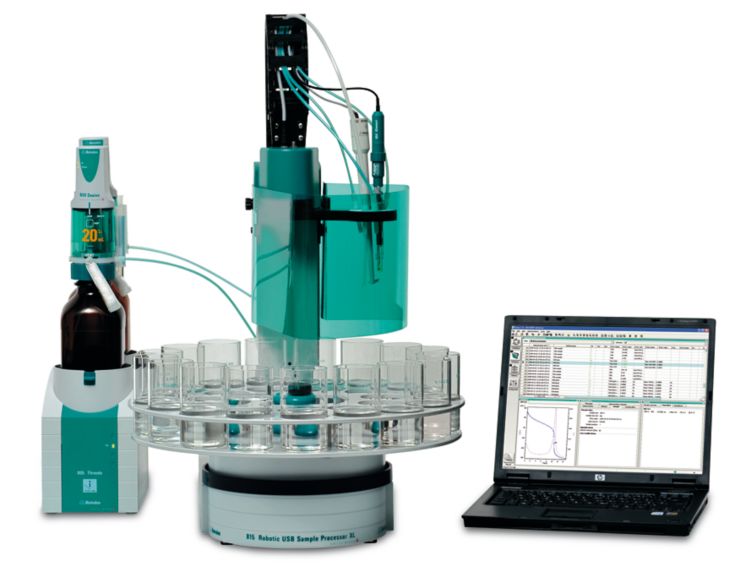Water hardness is often determined photometrically using two different indicators and while performing the determination at two different pH values. This requires significant time to accurately adjust the pH. The determination itself is subjective, as the color change is determined by the analyst and not by an analytical device, which can cause differences between different analysts.
This application note introduces a more robust option to easily assess calcium, magnesium, and total hardness in water by using the Cu-ISE and two different titrants. Sample preparation is identical for both analyses and can therefore be automated without any issues. The Cu-ISE is also easy to handle. Additionally, the analysis is no longer subjective and both the precision and repeatability of the results are improved.
This application is demonstrated on tap water from Herisau, Switzerland. It contains quite a high amount of calcium and magnesium ions naturally.
No sample preparation is required for this analysis. For the analysis itself, approximately 100 mL tap water is needed for each application.

The analyses are carried out on an 815 Robotic USB Sample Processor XL in combination with a 907 Titrando and the tiamoTM software. For indication, a Cu-ISE in combination with a Long Life ISE reference electrode is used.
Two determinations need to be performed. During the first titration with EDTA, the sum of calcium and magnesium is measured, whereas with the second titration with EGTA, only the calcium is analyzed. From this difference, the magnesium hardness can be calculated. A small amount of either a Cu-EDTA or Cu-EGTA solution is added for the indication of the equivalence point in both titrations.
Sharp titration curves with a large potential difference are obtained for both analyses. The results are reproducible as displayed in Table 1.
| Mean value / mmol/L | SD(abs)/ mmol/L | SD(rel) in % | |
|---|---|---|---|
| Total hardness | 3.517 | 0.020 | 0.57 |
| Ca hardness | 2.547 | 0.012 | 0.47 |
| Mg hardness | 0.971 | 0.009 | 0.94 |
This application shows the possibility of an objective, fast and reliable determination using the Cu-ISE. The Cu-ISE is easy to handle, and its surface can be easily polished as soon as performance decreases, resulting in a refreshed surface.
As both analyses are performed with the same instruments and electrodes, they are easily automated. The automation leads to precise and reproducible results. Even more time can be saved if the analyses are carried out on an OMNIS sample robot where parallel analyses are possible.
Internal reference: AW TI CH1-1163-022014
 Share via email
Share via email
 Download PDF
Download PDF